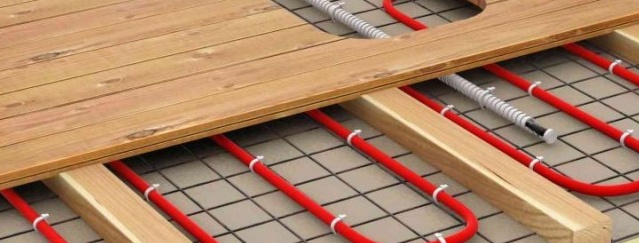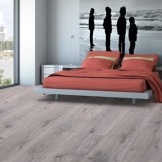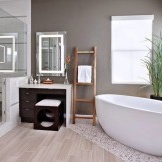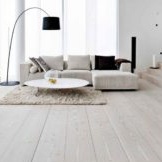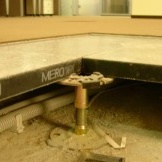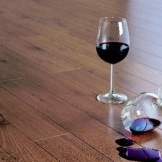Warm floor: types, description and photo
Warm floors were used in domestic construction in the Soviet years, however, then they were quite meaningless. This was due to the fact that the steam heating pipes in multi-apartment buildings were located in interfloor ceilings. Thus, a warm floor could be, for example, on the site of a flight of stairs.
The modern idea of underfloor heating, of course, is imported from abroad. In particular, from the Scandinavian countries with their long and snowy winters on the one hand and a large number of individual housing on the other. Now a variety of floor heating systems are offered by manufacturers in Denmark, Norway, Germany, USA, South Korea. There are domestic offers.
Who needs a warm floor?
- Residents of the first floors of apartments (as you know, the production of thermal insulation works during mass development leaves much to be desired)
- Residents of other floors - at least in bathrooms
- Owners of suburban real estate, operated throughout the year.
Types of underfloor heating
1. Electric underfloor heating which, in turn, happens:
- cable (heating sections and mats);
- film (carbon and biometallic);
2. Water.
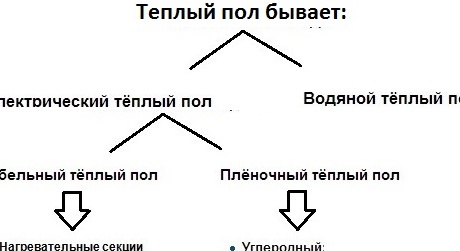
Electric floor considered the most popular. This is not strange, because it has undeniable advantages: anti-allergenic effect, there are no conventional flows, will evenly distribute heat throughout the area. There are several types: cable, rod and film. According to the principle of heating, it can be infrared or convection.
Cable found in the form of special heating sections, mats and cables on the reel. The differences between them for the most part lie only in the installation system. The general principle is as follows: an electric cable is mounted on the floor and electricity is supplied to it using a temperature controller. Electric underfloor heating can be found in the form of heating sections and mats. Moreover, the heating sections must be mounted on a screed (cement-sand), and the mats - in an old screed on a layer of tile adhesive. Sections are laid on a leveled prepared surface. Previously, you should think about the arrangement of household appliances and furniture in the room: if you place the equipment on a warm floor, this is fraught with failure of both.
You can level the surface with bulk floorsthat are flooded by lighthouses. After hardening, thermal insulation is laid on a leveled base, a mounting tape is attached to it, then, along the notches of the tape, the thermal cable is laid out. You can not directly attach the cable, this will lead to failure of the entire system.
The next important point is to determine the installation location of the thermostat and output the ends of the cable for connection with it. The cable to the thermostat can be placed outside in the box or for this channel can be drilled in the wall. A layer of cement-sand mixture is poured over the cable, and on top of it you can lay the desired coating in accordance with the usual instructions (ceramic tile on tile adhesive, or laminate on a soundproofing substrate, or carpet, linoleum, parquet) It is recommended to turn on the warm floor after the final curing of all layers of the “cake”. Heating mats are the thinnest variety of electric heat-insulated floors, suitable for both urban apartments and suburban housing. The thickness of the heating mat does not exceed one and a half millimeters.
There are two types of cable for an electric floor: two and a single-core.Their differences are that during installation both ends of a single-core cable must be returned to a single point, for a two-core, the second end does not need to be returned.
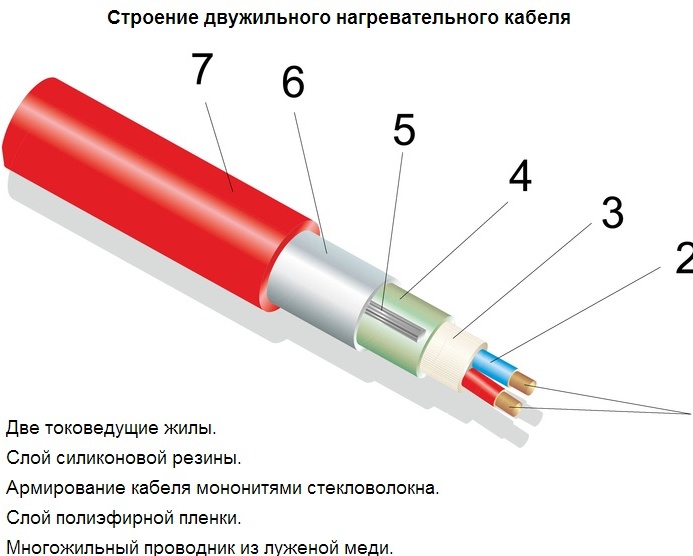
Film floor(It's infrared, which is not entirely true) - a new kind of warm electric floor where the film acts as a heating element. It is divided into two types: carbon and bimetal
- Carbon presented in the form of a rubber element placed between the layers of the mylar film. Thermal film is used as an additional (and sometimes the main) heating system. Moreover, the design can be placed both on the floor and on the ceilings or wall.
- Bimetallic the floor is provided in the form of a polyurethane film, consisting of two layers: the upper one is an alloy of copper, the lower one is aluminum. It has the form of a continuous roll with square sections of 0.585 x 0.585. At the edges, the section consists of an open current-carrying bus, interconnected by a zigzag wire with a thickness and pitch of 1 mm. What is the best coating to cover? This is definitely laminite, linoleum, and carpet. Not recommended under tile. It is advisable not to set the thermostat above +27 ° C, otherwise you risk damaging the flooring.
Water floor heating - The most traditional hot water heating system. In the traditional sense, these are the same central heating radiators, only in the form of pipes passing under the floor covering. A similar system can be found almost everywhere: apartment buildings, cottages, shops, various shopping and sports complexes. Thanks to various designs, such a system can be used in any building, both with connection to a heating plant and a fully autonomous heating system. Water floor heating is able to evenly distribute heat over the area. This means that, compared to radiators, the temperature can be lowered by several degrees, and at the same time, there will be no difference. A reduction of even 2 ° C saves up to 12% of electricity.
What features does such a system still have?
- a water floor (unlike an electric one) can be held under the furniture and at the same time it will not cause it to dry out;
- polyethylene or metal-plastic pipes, of which the water floor is made, do not corrode, does not contribute to the collection of deposits, which allows you to save the diameter of the bore;
- Today, various thin systems are being developed (pipeline with a diameter of 8 mm or more)
- there are even lightweight collapsible underfloor heating systems that do not require concrete pouring;
- with proper use and installation, a water heated floor is able to settle under any coating, even under parquet;
Conclusion
Cable systems - the best combination of price and quality and the most convenient way to comfort. Infrared mats are easier to install and practically do not take up height, but are quite expensive. Water heating is cheaper to operate, but very cumbersome to install and less durable. Thanks to the warm floors, warm air is distributed in the room from the bottom up, which is recognized as the best for well-being.

